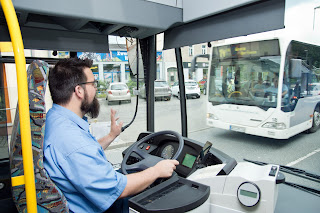How Bus Services Are Adapting To Meet Changing Consumer Demands?
Bus services Melbourne are evolving at an astonishing pace, as they adapt to demand and changing customer habits. This has been driven by the increase in urbanization, changing demographics and customer needs or wants. The following are some ways how bus service providers are adapting to meet these new demands:
Reaching more people in rural areas.
Rural areas are more expensive to reach. Rural bus services require a higher frequency of service, which can be difficult to provide with the same level of efficiency as urban routes. They also need larger fleets and more operators, since the demand for their services is generally lower than in cities.
This means that rural operators may find it hard to make money out of their routes without subsidies from local authorities or government grants--which aren't always available.
Developing a better understanding of customers needs and wants.
The first step to meeting the needs of your customers is to develop a better understanding of them. Start by asking them what they want, and then listen carefully as they let you know. You can do this through customer surveys or feedback forms, which will help you identify where your offerings fall short in terms of meeting their desires.
Once you've gathered some data on what's important to them, take steps to improve the experience they have while using your services--whether that means adding amenities such as Wi-Fi on board, or improving the quality of service (e.g., ensuring buses arrive on time).
Service quality improvement.
Bus operators are also focusing on service quality improvement. They are looking at ways to provide better services and improve customer satisfaction, such as providing information about bus routes and stops in advance through mobile apps or websites. Some companies have even launched their own apps so that passengers can easily track the location of their buses and get updates about delays, accidents or other incidents along their routes.Bus companies may also be improving their fleets by adding new buses with high-tech features such as GPS tracking systems that allow passengers to know exactly when the vehicle will arrive at its stop (or departure point), automatic ticketing machines that make boarding faster for passengers without tokens/cash cards, Wi-Fi connectivity inside buses so drivers can receive calls from dispatch centers without having to pull over into rest areas etc.,
Providing more flexibility through service choices.
Bus services Melbourne are reaching more people in rural areas, including rural communities where public transit is not as accessible or affordable as it could be.
Bus companies have been able to do this by offering flexible fares, which allow customers to pay based on how far they travel and when they travel rather than having to pay for an entire ride upfront. For example, some bus companies offer monthly passes for unlimited rides during the month--a great option for commuters who use public transportation multiple times per week!
Conclusion
It's clear that the bus industry is adapting to meet changing consumer demands. With more customers than ever before relying on public transport, it's important that we take their needs and wants into account as we develop our services.
The good news is that there are plenty of ways in which this can be done - from offering more flexibility through service choices, to providing greater accessibility through technology solutions like wi-fi hotspots on buses or apps which allow passengers to book tickets at any time and anywhere.




Comments
Post a Comment